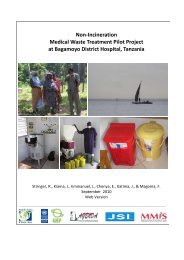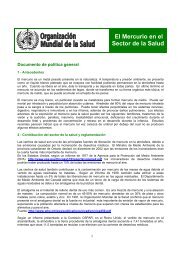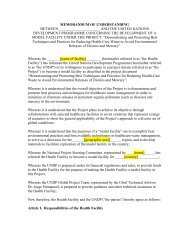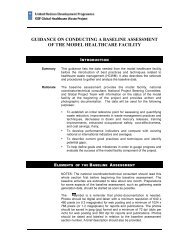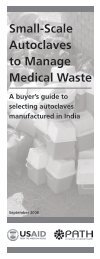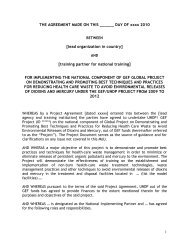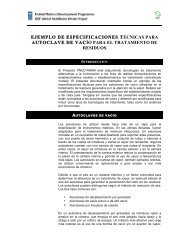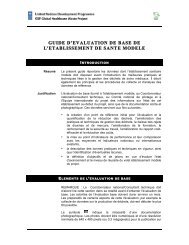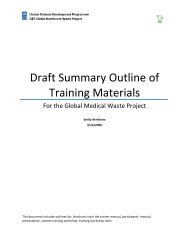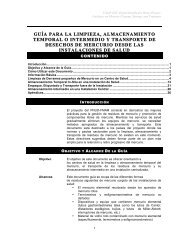Latvia
Latvia
Latvia
Create successful ePaper yourself
Turn your PDF publications into a flip-book with our unique Google optimized e-Paper software.
Health systems in transition<br />
<strong>Latvia</strong><br />
3.2 Health expenditure<br />
Published data concerning total health care expenditure in <strong>Latvia</strong> vary according<br />
to different sources, for a variety of reasons. National accounting and financial<br />
statistics do not yet use the Organisation for Economic Co-operation and<br />
Development (OECD) National Health Accounts approach, and therefore<br />
the definitions, data collection and interpretation may not fully comply<br />
with the international OECD reporting framework. The SCHIA compiles<br />
its financial reports based on data provided by service providers’ activity<br />
records. Traditionally, these data report on provider revenue according to the<br />
source: the state budget, user charges and “other income”, whereby “other”<br />
may include voluntary insurance, direct payments, or investments (private or<br />
by local governments). Expenditure reporting, in turn, includes staff salaries,<br />
and administrative, capital and current expenditure. Thus, national statistical<br />
reporting rather reflects a kind of summarized balance sheet of the providers’<br />
enterprises, rather than expenditure by specific health/medical service<br />
categories.<br />
Moreover, the hyperinflation of 1992, along with the introduction of the<br />
national currency (the Lat) in 1993 and the banking crisis of 1995 have further<br />
negatively affected the accuracy of financial statistics.<br />
Finally, private OOP expenditures are estimated differently from source to<br />
source. The SCHIA reports only expenditure associated with services that are<br />
statutorily financed and provided and that also include patients’ co-payments as<br />
part of the private expenditure. All other approaches to estimating public and<br />
private spending provide different results, which helps to explain the difference<br />
in figures between national sources and the WHO Health for All database later<br />
in this profile.<br />
Table 3.1 indicates how estimates of health expenditures have developed<br />
in <strong>Latvia</strong> in the period 1995–2004. As a share of GDP, health expenditures<br />
show a slightly increasing trend in recent years, climbing from 6% in 2000 to<br />
6.4% in 2004 (after falling at the end of the 1990s). The public share of total<br />
health expenditure has been steadily falling since the mid-1990s, from the very<br />
high level of 95% in 1995, and appears to be stabilizing after 2001 at 51–52%<br />
of total health expenditure. However, taking into consideration that there are<br />
different approaches to estimation private expenditure, these figures must be<br />
treated with great caution.<br />
The very large increase in the private share of spending is due to the<br />
introduction of user charges in the form of “patient fees” in 1996, which<br />
were supplemented by the introduction of co-payments in later years (see<br />
Section 3.3 Population coverage and basis for entitlement and Section 3.4<br />
64





